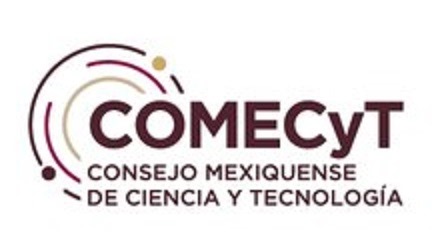MS-MS-58-MA “Soap-sive”
MS-MS-58-MA “Soap-sive”
Categoría: Medio Superior (Preparatoria)
Área de participación: Medicina y Salud
Resumen
Este proyecto se llevó a cabo con el fin de evitar que personas con piel sensible sufran más
daños en su piel a causa del jabón que ocupan. Los efectos que tiene un jabón en la piel
pueden afectar tanto al grado de que la gente prefiera no tener buena higiene a seguir
utilizando jabones de mala calidad. Soap-Sive se basa en jabones naturales hechos a base de
plantas que tienen efectos buenos en la piel y que no la dañan, por ejemplo: Milenrama, Aloe
Vera y Saponaria. Las tres plantas son un gran ingrediente para hacer jabones naturales ya
que sus propiedades ayudan a sustituir los químicos de los jabones comerciales y, además,
ayudan a mantener una buena higiene sin tener que dañar la piel. Mediante pruebas de estos
jabones pudimos ver que realmente ayudan a no dañar la piel, que ayudan a limpiar a
profundidad y, que por sus ingredientes y textura suave, logra calmar un poco la piel.
Claramente, los cambios que se muestran no son inmediatos sino que toman unos cuantos
días de uso continuo para mostrarse. Estos resultados son favorables ya que los jabones
Soap-Sive son una gran alternativa para cualquier tipo de piel, no solo para aquella que es
sensible.
Pregunta de Investigación
Mucha gente no toma en cuenta la importancia de la piel, cuando ya está en un estado sensible es necesario tener un cuidado más detallado como checar qué productos se usan sobre esta. Por lo tanto ¿Qué tipo de ingredientes debemos usar para poder realizar un jabón para este tipo de personas?Planteamiento del Problema
Mucha gente no toma en cuenta lo importante que es la piel. Este es el órgano más grande del
cuerpo y el que está mayor tiempo expuesto al sol por lo que se debe de cuidar muy bien. Sin
embargo, cuando ya está en un estado sensible es necesario tener un cuidado más detallado
como checar qué productos se usan sobre esta. Es por esto que decidimos hacer este proyecto
porque sabemos lo difícil que es encontrar un jabón perfecto para la gente que sufre alguna
enfermedad relacionada con la piel. El jabón que planeamos hacer sabemos que no es
perfecto para todas las pieles; sin embargo, al ser uno natural sí es un jabón que no causará
ningún daño. Todos los ingredientes que llevará son naturales y tienen uno o más beneficios
para la piel, decidimos que el jabón no llevará ninguna esencia ya que queremos mantenerlo
lo más natural posible. Cualquier persona podrá usarlo, pero el público al que está dirigido
especialmente es aquellos con enfermedades en la piel como el cáncer.
Antecedentes
Nuestro proyecto se basa en jabones para manos hechos de ingredientes naturales que no
irriten a ninguna piel, en especial a aquellas con cáncer. Sabemos que es difícil encontrar
jabones sin demasiados químicos o si existen no limpian ni regeneran la piel completamente.
Nuestro proyecto son jabones hechos de la planta Saponaria (planta de jabón), esta planta es
un sustituto natural de la sosa cáustica, ingrediente que ayuda a generar la espuma al
momento del contacto con el agua. También lleva la planta Milenrama, esta ayuda a limpiar y
regenerar la piel de poco a poco. Nuestro fundamento científico es que aunque la saponaria
tiene propiedades medicinales para la tos y la bronquitis, también sirve para la picazón en la
piel. Tiene propiedades calmantes, antibacterianas y fungicida; es por eso que se ocupa
mucho en la cosmética natural.
Objetivo
1.4.1 Objetivo General
Buscamos el bienestar de la gente con piel sensible para que ellos mejoren su higiene sin
dañar más su piel.
1.4.2 Objetivo Particular
Nuestro objetivo es hacer un jabón natural para piel sensible que limpie a profundidad sin
irritar o quemar la piel; con el fin de que la gente con problemas en la piel evite gastar en
especialistas o en productos caros que no funcionen correctamente.
Justificación
Nuestro proyecto es viable ya que no es fácil vivir con una enfermedad en la piel porque se
deben tener ciertos cuidados especiales como usar un jabón adecuado. Los jabones son un
producto de higiene que usamos diariamente ya sea para lavarse el cuerpo o las manos. Y de
acuerdo con nuestra investigación, la gente con piel sensible debe ocupar jabones especiales,
productos muy difíciles de encontrar o muy caros. Aunque nuestro jabón lleva plantas, es
muy accesible en todos los aspectos. Además puede ser usado como jabón para manos,
cuerpo e incluso para el cabello ya que su presentación es líquida. Un jabón con demasiados
químicos puede dañar severamente la piel de cualquier persona, pero puede ser peor para una
piel sensible; la búsqueda de jabones que limpien la piel adecuadamente y que no la dañen
puede ser agotadora, por lo que también pensamos que nuestro proyecto puede ser una gran
idea para la salud y el bienestar de las personas.
Hipótesis
Que el jabón realizado funcione eficazmente, que tenga efectos positivos en todo tipo de piel,
sobre todo en pieles sensibles. También que el producto evite irritación, sarpullidos o
quemaduras en la piel.
Método (materiales y procedimiento)
3.1 Materiales
● Milenrama
● Saponaria
● Agua
● Glicerina
● Gel de Aloe Vera
● Aceite de oliva
3.2 Procedimiento
Lo primero que hicimos fue investigar superficialmente acerca de los ingredientes que
llevaría nuestro jabón desde los ingredientes que lleva un jabón natural hasta los de un jabón
industrial. También investigamos qué materiales naturales pueden sustituir a los ingredientes
tóxicos y químicos de un jabón. Cuando tuvimos toda la información, nos encargamos de
investigar a profundidad todo lo relacionado a los materiales naturales que ocuparemos en el
jabón (gel de aloe vera, saponaria, milenrama); la información que investigamos fue desde su
lugar de origen hasta sus principales beneficios y aplicaciones en la vida diaria. Cuando toda
la información fue aceptada, empezamos a investigar de manera más profunda todo lo
relacionado con la elaboración del jabón. Buscamos una receta base de un jabón natural, de la
7
cual solo ocupamos los pasos y ya añadimos los demás ingredientes. Cuando tuvimos la
información necesaria, empezamos a hacer jabones. Primero lo queríamos hacer en barra,
entonces, tratamos de hacerlo en barra. Sin embargo, tuvimos unos problemas y decidimos
hacerlo líquido; ya que al hacerlo en barra necesitábamos agregar un químico que alzaba el
pH del jabón. Ya que tuvimos una prueba del jabón, se lo dimos a personas con piel sensibles
y les dijimos que lo probaran. Al momento en que terminaran de probarlo, hicimos un
cuestionario acerca de los efectos que el jabón tuvo en la piel sensible. Cuando ya tuvimos la
encuesta hecha, le pedimos a las personas que la respondieran sinceramente poniendo todos
los pros y contras del producto. Al ya tener las respuestas del cuestionario, vimos las áreas
que debemos mejorar en el jabón
Resultados
Los resultados que obtuvimos fueron mediante una encuesta que le hicimos a las personas
que encontramos que tienen piel sensible. Los resultados fueron que sí se notaron cambios en
la piel, solo que no tan rápidos y no tan notorios. También en la encuesta respondieron que el
jabón limpia correctamente, que no irrita la piel y que la deja muy suave, incluso, alguien
puso que relaja la piel un poco. También pusieron que le gustaría que el jabón fuera no solo
líquido sino también en barra.
Discusión
Aunque los resultados fueron positivos, nos gustaría buscar a más personas con piel sensible
que gusten probar el jabón ya que esto ayudaría a ver en qué debemos mejorar y en qué no.
Aunque sí hubo cambios en la piel con el producto, nos hubiera gustado que estos fueran más
notorios y que ocurrieran un poco más rápido; así que buscaremos la forma de lograrlo.
Mediante los resultados nos dimos cuenta que sí cumplimos con la hipótesis ya que el jabón
8
limpia correctamente y no genera ningún tipo de irritación. Por último, buscaremos la manera
de poder hacer el jabón en barra de una forma que no dañe a ningún tipo de piel.
Conclusiones
Los resultados obtenidos fueron positivos ya que no tenemos que mejorar muchas cosas del
jabón; sin embargo, nos hubiera gustado encontrar a más personas que tuvieran piel sensible
porque esto hubiera ampliado más la cantidad de comentarios acerca de nuestro proyecto. A
partir de esto nos dimos cuenta que es muy difícil encontrar a personas con piel sensible ya
que no todos saben qué es o, simplemente, no saben que lo tienen. También fue un poco
difícil encontrar ingredientes naturales que se pudieran usar en un jabón y que no dañaran
ningún tipo de piel. Además, encontrar donde los venden no fue nada fácil o tardaban mucho
en llegar.
En conclusión, tuvimos algunas complicaciones durante todo el proceso; pero supimos
solucionarlos a tiempo. Cumplimos con nuestro objetivo, pero no de la manera que
queríamos; esto porque los cambios al no ser tan notorios llevarán a que las personas acudan
a un especialista que les ayude en menos tiempo.
Bibliografía
Borràs, C. (2022, 5 enero). ¿Cómo hacer jabón casero sin sosa cáustica?
ecologiaverde.com.
https://www.ecologiaverde.com/como-hacer-jabon-casero-sin-sosa-caustica-1049.htm
l.
● Exea. (2021, 22 febrero). Ventajas de los jabones artesanales frente a los jabones
industriales. Los jabones de Montse.
9
https://www.losjabonesdemontse.com/blog/ventajas-de-los-jabones-artesanales-frente
-a-los-jabones-industriales/#:~:text=A%20diferencia%20de%20los%20jabones,ventaj
as%20frente%20a%20los%20industriales.%20https://www.lasentipensante.com/jabon
-natural-vs-jabon-industrial/.
● Extracto de Achillea millefolium: ¿Qué es en cosmética? | Lesielle. (s. f.).
https://www.lesielle.com/int/es/achillea-millefolium-extract-que-es-en-cosmetica-inci-
1602
● Milenrama (Achillea Millefolium) – Ecco Verde Tienda online. (s. f.). Ecco Verde
Tienda Online. https://www.ecco-verde.es/info/ingredientes/milenrama
● Psoriasis – síntomas y causas – Mayo Clinic. (2022, 8 octubre).
https://www.mayoclinic.org/es/diseases-conditions/psoriasis/symptoms-causes/syc-20
355840#:~:text=C%C3%B3mo%20se%20desarrolla%20la%20psoriasis,-En%20la%2
0psoriasis&text=La%20psoriasis%20es%20una%20enfermedad,cr%C3%B3nica.
● Sentipensante, L. (2021, 13 abril). Jabón natural vs jabón industrial – La
sentipensante. La Sentipensante.
https://www.lasentipensante.com/jabon-natural-vs-jabon-industrial
MS-MS-58-MA “Soap-sive”
MS-MS-58-MA “Soap-sive”
Summary
This project was carried out in order to prevent people with sensitive skin from suffering
more damage to their skin due to the soap they use. The effects of a soap on the skin can
affect that much that people prefer not to have good hygiene than to continue using low
quality soaps. Soap-Sive is based on natural soaps made from plants that have good effects on
the skin and that do not damage it, for example: Yarrow, Aloe Vera and Soapweed
(Saponaria). The three plants are a great ingredient to make natural soaps since their
properties help replace the chemicals of commercial soaps and, in addition, help keep good
hygiene without having to damage the skin. Through testing these soaps we could see that
they really help not to damage the skin, that they help to clean in depth and, due to their
ingredients and soft texture, they manage to calm the skin a little. Clearly, the changes shown
are not immediate but take a few days of continuous use to show. These results are favorable
since Soap-Sive soaps are a great alternative for any type of skin, not just for those that are
sensitive.
Research Question
Many people do not take into account the importance of the skin, when it is already in a sensitive state it is necessary to take more detailed care such as checking what products are used on it. Therefore, what type of ingredients should we use to be able to make a soap for this type of people?Problem approach
Many people do not take into account how important skin is. This is the largest organ in the
body and the one that is exposed to the sun for the longest time, so it must be taken very good care of. Without
However, when it is already in a sensitive state, more detailed care is necessary.
How to check what products are used on it. This is why we decided to do this project
because we know how difficult it is to find a perfect soap for people who suffer from some
skin related disease. The soap we plan to make we know is not
perfect for all skin types; However, since it is a natural soap, it is a soap that will not cause
no damage. All the ingredients it will contain are natural and have one or more benefits
for the skin, we decided that the soap will not contain any essence since we want to keep it
as natural as possible. Anyone can use it, but the intended audience
especially those with skin diseases such as cancer.
Background
Our project is based on hand soaps made from natural ingredients that do not
irritate any skin, especially those with cancer. We know it's hard to find
Soaps without too many chemicals or if they exist do not clean or regenerate the skin completely.
Our project is soaps made from the Saponaria plant (soap plant), this plant is
a natural substitute for caustic soda, an ingredient that helps generate foam by
moment of contact with water. It also has the Yarrow plant, this helps clean and
regenerate the skin little by little. Our scientific basis is that although saponaria
It has medicinal properties for cough and bronchitis, it is also used for itchy skin.
fur. It has soothing, antibacterial and fungicidal properties; that's why he takes care
a lot in natural cosmetics.
Objective
1.4.1 General Objective
We seek the well-being of people with sensitive skin so that they improve their hygiene without
further damage your skin.
1.4.2 Particular Objective
Our goal is to make a natural soap for sensitive skin that cleans deeply without
irritate or burn the skin; so that people with skin problems avoid spending on
specialists or expensive products that do not work properly.
Justification
Our project is viable since it is not easy to live with a skin disease because it
They must take certain special care such as using appropriate soap. Soaps are a
hygiene product that we use daily either to wash our body or our hands. and of
According to our research, people with sensitive skin should use special soaps,
products that are very difficult to find or very expensive. Although our soap contains plants, it is
very accessible in all aspects. It can also be used as hand soap,
body and even for the hair since its presentation is liquid. A soap with too many
Chemicals can severely damage anyone's skin, but it can be worse for a
sensitive skin; the search for soaps that clean the skin properly and do not damage it
can be exhausting, so we also think that our project can be a great
idea for people's health and well-being.
Hypothesis
That the soap made works effectively, that it has positive effects on all skin types,
especially on sensitive skin. Also that the product avoids irritation, rashes or
skin burns.
Method (materials and procedure)
3.1 Materials
● Yarrow
● Saponary
● Water
● Glycerin
● Aloe Vera Gel
● Olive oil
3.2 Procedure The first thing we did was do some superficial research about the ingredients that would take our soap from the ingredients that a natural soap contains to those of a soap industrial. We also investigate which natural materials can replace the ingredients toxic and chemicals of a soap. When we had all the information, we took care of investigate in depth everything related to the natural materials that we will use in the soap (aloe vera gel, saponaria, yarrow); The information we investigated was from your place of origin to its main benefits and applications in daily life. When all The information was accepted, we began to investigate everything in more depth. related to soap making. We are looking for a base recipe for a natural soap, 7 which we only take up the steps and add the other ingredients. When we had the necessary information, we start making soaps. First we wanted to do it in a bar, So, we tried to do it in a bar. However, we had some problems and decided make it liquid; since when making it in a bar we needed to add a chemical that raised the Soap pH. Since we had a test of the soap, we gave it to people with sensitive skin and we told them to try it. The moment they finished testing it, we made a questionnaire about the effects soap had on sensitive skin. When we already had the survey done, we asked people to answer it honestly by putting all the pros and cons of the product. Once we had the answers to the questionnaire, we saw the areas What should we improve in soap?
Results
The results we obtained were through a survey we did to people
which we find have sensitive skin. The results were that changes were noted in
the skin, just not as fast and not as noticeable. Also in the survey they responded that the
soap cleans properly, does not irritate the skin and leaves it very soft, even someone
It relaxes the skin a little. They also said that they would like the soap to be not only
liquid but also in stick form.
Discussion
Although the results were positive, we would like to reach out to more people with sensitive skin
that they like to try the soap since this would help to see where we should improve and what not.
Although there were changes in the skin with the product, we would have liked them to be more
noticeable and that they happened a little faster; so we will find a way to achieve it.
Through the results we realized that we did comply with the hypothesis since the soap
8
It cleans correctly and does not cause any type of irritation. Finally, we will find a way
to be able to make bar soap in a way that does not harm any type of skin.
Conclusions
The results obtained were positive since we do not have to improve many things about the
soap; However, we would have liked to find more people who had sensitive skin
because this would have further expanded the number of comments about our project. TO
From this we realized that it is very difficult to find people with sensitive skin anymore.
that not everyone knows what it is or simply doesn't know that they have it. It was also a bit
difficult to find natural ingredients that could be used in soap and that would not harm
no type of skin. Furthermore, finding where they sell them was not easy or it took a long time.
in arriving.
In conclusion, we had some complications throughout the process; but we knew
solve them in time. We met our objective, but not in the way we
we wanted; This is because the changes, not being so noticeable, will lead people to come
to a specialist to help them in less time.
Bibliography
Borràs, C. (2022, January 5). How to make homemade soap without caustic soda?
ecologyverde.com.
https://www.ecologiaverde.com/como-hacer-jabon-casero-sin-sosa-caustica-1049.htm
l.
● Exea. (2021, February 22). Advantages of handmade soaps compared to soaps
industrial. Montse's soaps.
9
https://www.losjabonesdemontse.com/blog/ventajas-de-los-jabones-artesanales-frente
-to-industrial-soaps/#:~:text=A%20difference%20of%20%20soaps,advantage
as%20frente%20a%20los%20industriales.%20https://www.lasentipensante.com/jabon
-natural-vs-industrial-soap/.
● Achillea millefolium extract: What is it in cosmetics? | Lesielle. (s.f.).
https://www.lesielle.com/int/es/achillea-millefolium-extract-que-es-en-cosmetica-inci-
1602
● Yarrow (Achillea Millefolium) - Ecco Verde Online store. (s.f.). Ecco Verde
Online Store. https://www.ecco-verde.es/info/ingredientes/milenrama
● Psoriasis - symptoms and causes - Mayo Clinic. (2022, October 8).
https://www.mayoclinic.org/es/diseases-conditions/psoriasis/symptoms-causes/syc-20
355840#:~:text=C%C3%B3mo%20se%20develops%20la%20psoriasis,-In%20la%2
0psoriasis&text=%20psoriasis%20is%20a%20disease, cr%C3%B3unique.
● Sentipensante, L. (2021, April 13). Natural soap vs industrial soap - The
sentipensante The Sentipensant.
https://www.lasentipensante.com/jabon-natural-vs-jabon-industrial






